In the previous installments of this series I tackled all kinds of fantasy tropes – now it is time to re-invent magic users. I want to come up with a slightly different, off-beat magic interpretation tying it to my old Magic as Programming concept.
Lets imagine a world in which magic is not an in-born talent but rather a law of the land. It is sort of their version of quantum physics. In our world we have the uncertainty principle which tells us that by merely observing a particle we are actively collapsing it’s wave function and catalyzing one of many possible outcomes. In their world the very fabric of space-time continuum is mutable. It can be bent, twisted and reshaped by a sentient observer by the sheer force of will. This shaping requires intense focus, and effort but it is a skill that can be learned by anyone.
There exist sacred patterns which when held in ones mind focus the will in a way that allows manipulating the reality. These are usually ovals, helixes, and various abstract symbols. Their configuration in 3D space and the way they intersect allows a magic user to cause specific effects. These abstract, three dimensional patterns are known as spells.
To cast a spell, one constructs the shape and symbols in ones mind and then wills it into existence. This causes the reality to wrap, but also sears the pattern into the fabric of time-space continuum leaving a temporary afterimage that can be “seen” (or rather felt) by those trained to detect it for hours and sometimes days afterwards.
Sometimes, it is possible for an over-eager magic user to use too much force and actually rip the fabric of reality creating a breach to the chaotic, unexplored and impossible to understand planes that lie beyond physical. Some say that what lies on the other side is the domain of gods. Others claim it is a spirit world where mortal souls go upon death. Yet others claim it opens the door to a hellish dimension that is twisted and evil home to demons and monsters. It could be any of these things, all of them or neither. It is however understood by most magic users that a breach is never a good thing. A rip in the fabric of reality will usually emanate strange energies that warp and corrupt everything around, and can become a gateway for eldritch creatures of unspeakable horror.
Mages
Magic is accessible to anyone, but the Helosian Order of High Magic is considered the world-wide authority on the subject. Helos is the most ancient city of the world – funded at the dawn of time, it has survived and outlived eight empires that grew and fell around it. The White Towers of Helos are the home to the Great Library which is contains the biggest and most complete collection of writings on all things magical.
Helosians have been studying magic for many centuries, and developed what is considered to be the most elegant, safest and most efficient way of doing magic. Their spells are minimalistic, elegant, easy to remember, regular and guaranteed not to cause a breach. Through intense study and trial and error they have discovered that some magical patterns are more potent than the others. For example, there many ways of producing energy that is to be used by the spell to cause a specific effect, but there are only about seven that Helosian Mages think are worth bothering with because of efficiency and stability.
Helosian Order is always at the forefront of the magical research. They always seek to innovate, optimize, stabilize and simplify ancient spells. While the bulk of the research is done at the Great Library in the heart of Helos the order has built a network of libraries and research outposts throughout the world. Most major cities in the world have their own White Towers district, complete with a library and magical portals leading back to Helos and teaching facilities.
The Order is open and anyone can join and learn the Helosian High Magic. However, before you join the order you must swear “The Oath”. All members of the order are bound by it, and breaking it is punished by death. The full text of the oath is too long to include here, but the three most important rules by which each Mage must abide by are:
- A Mage swears to never willingly cause a breach in order to exploit the eldritch powers from the planes beyond. If casting a spell causes a breach by accident, a Mage agrees to submit himself to a tribunal of his peers which will determine whether or not his life is worth sparing, and if punishment lesser than death can be levied upon him.
- A Mage swears not to extend anyone’s lifespan by the use of magic (especially one’s own). Helosians believe that nothing good can come out of immortality. This rule has kept the Order vital, and agile for many centuries now. Without immortal arch-mages at the helm, there is a high turnaround and lots of new ideas and new points of view which is great for research. It also makes the Order appear humble, reasonable and responsible to outsiders which is very important for public relations. There is however unspoken agreement that Mages can keep themselves healthy and heal old age-related ailments. As long as a Mage ages outwardly at a normal pace and leaves the order at an acceptable age (so around 90-100 years old for humans) they won’t be punished. Mages found “cheating” are usually given slap on the risk, unless their infraction is very jarring and becomes a public controversy.
- Finally, all Mages must swear never to power their spells via life force of living things. While living things are marvelous power-plants of coiled potential energy that could be pumped into a spell at a moments notice, the practice of tapping or siphoning this energy is forbidden. The order is very strict about this, and this rule doesn’t just cover sentient beings but all living things – including plants.
The order is very academically oriented. Helosian Mages prefer not to involve themselves in wars or political struggles. Their aims are to study, improve and teach magic. The most prominent members of the order are not necessarily powerful and skilled spell casters but diligent researchers who have discovered new magical paradigms or have proved old paradigms to be wrong or inefficient.
There however exists a militant branch within the order known only as Breach. This secretive sub-order attracts the less academic and more martial oriented mages. The official purpose of Breach is to find magical breaches, close them and banish anything that might have crossed over to the physical world. They also usually are tasked with capturing, and punishing those responsible for causing the breach and enforcing The Oath within the ranks of the order.
While on duty, Breach Mages wear deep purple robes, and carry black wooden mage staffs which are both considered symbols of their status and authority. They are rarely seen in public like that, since most revert to the traditional muted white, blue, gray or pastel robes for their day-to-day activities. When on a mission they are said to be efficient, ruthless and disciplined fighting force. Their favorite tactic is to teleport in as a group, surrounding their target, and teleport back out mere seconds later leaving no trace at the scene.
Think of Helosian Mages as about computer scientists – they are mostly interested in theory and academic pursuits. They would rather mathematically prove a spell is correct/optimized, rather than write it and test it half of the time.
Wizards
Not everyone has what it takes to become a Helosian Mage. Some regions of the world simply do not have access to their teachings. Some people are also not very keen on swearing an oath of allegiance to an ancient, world-wide society in order to learn a few spells. Helos is not the only place in the world where magic has been studied, and many of the ancient tomes in the Great Library were not written by members of the Helosian Order but rather by outsiders. There are many ways to learn to cast spells, and there have been many great spell casters who have published magical research outside of the Order. Magic users who are not members of the Order and have not been formally trained in High Magic are commonly called Wizards.
There are actually many different types of Wizards. The most stereotypical example is what Mages refer to is a Hedge Wizard: an individual who is either self taught, or studied as an apprentice under another practitioner of this craft. Hedge Wizards usually hail from small villages or rural regions and have limited grasp on magical theory. They are proficient at casting the few spells they do know but their technique and form leaves a lot to be desired. A lot of them incorporate occult rituals into their spell casting, and practice live sacrifice to power their spells. Others use sloppy, unstable patterns that have been known to cause breaches or have warping effects on reality.
Battlewizards are Hedge Wizards who specialize in martial magic and warfare. They usually only know few reliable spells, but make up for their lack of power by considerable hand-to-hand fighting skills, and military experience. They are common sight at battlefields or in mercenary groups where they may specialize as healers, or offensive ranged damage dealers.
Of course there also exist more organized groups of Wizards. For example The Imperial School of Wizardry is the center of magical research at the Baravian Imperium from which the Order was banished two centuries ago. Baravian Wizards are just as organized and rigorous in their study as the Order itself, and while they lack their resources and long history they are also not bound by the self-imposed limitations of the Oath. Imperial Wizards frequently experiment with things like and life-force tapping, siphoning, spirit binding and life extension. They forbid breaching on principle, but they do not consider it an offense punishable by death.
Because of this, a lot of their spells are much more powerful, but also much more unstable. Mages consider a lot of what they do unethical, but Baravian emperors fully endorse and fund their research. Especially since their magic have given the Baravian rulers the gift of near immortality (but not yet of eternal youth).
A lot of Baravian magic is built around a lot of the Helosian principles and paradigms, but characterized by certain sloppiness. Part of it is that the School has only been around for two centuries and while it accomplished a lot in such a short time, it has neither the resources nor the long view of The Order. Since Helosian Mages keep the latest research to themselves, the Wizards often base their studies on ancient texts that have been recently debunked and phased out of use at the White Towers. Finally, while Helosian Mages always strive for perfect balance between power, stability, elegance and efficiency, Imperial Wizards tend to be focused on raw power and utility first and foremost. Their art is less academic and more down to earth, and grounded in needs and desires of the people. Some view it as a positive thing, while others as a terrible, built in flaw that will one day doom the Baravian empire.
Similarly to the Helosian Order, the Imperial School has spread across the world, and their universities can be seen in many cities. Ironically, their admittance standards are usually much stricter than those of The Order. They select only the candidates who show aptitude for magic or have existing experience, whereas Mages prefer complete novices who could be taught to cast magic “the right way”.
The Imperial School forbids destruction of sentient minds to power spells, and condone lethal use of magic only in self defense or during an armed conflict. They however do not police these rules internally, and rather defer to the local authorities when one of their members breaks them.
Baravian Wizards are famous for their pointy hats and very (some would say overly) ornate robes that are somewhat reminiscent of military uniforms. This is actually intentional and in Baravia it serves to reinforce and make obvious the School’s subservient relationship to the state.
There is one more prominent Wizard group worth mentioning. It is known only as The Council, and it functions as a loose, decentralized organization of independent magic practitioners. Despite the ominous sounding name and grandiose posturing by it’s members, the organization is very weak and unorganized compared to The Order or The School. The Council has no central authority. Wizards who are members organize themselves into local cells or Conclaves, each having it’s own charter, membership rules and own libraries and teaching facilities. Neighboring Conclaves usually cooperate with each other, share resources and provide services for members, but it is not uncommon for them to have antagonistic rivalries as well.
Council Wizards take great pains to distinguish themselves from plain Hedge Wizards, though often this difference is in name only. A lot of Council members are poorly educated, and completely ignorant of the current academic trends. Others spare no expenses to obtain Helosian or Baravian research papers and improve their craft.
Wizards would be akin to your run of the mill programmers and software engineers. Some are good, some are bad. Some are in it just for the money. Other are highly educated and highly skilled, but choose to build practical things rather than theorize all day.
Enchanters
There is a large group of magic users that believe that manipulating raw forces of magic is too dangerous. They are even more squeamish about causing breaches than Helosian Mages. Some call them The Tarnsun Wizards after the kingdom where they originated, but they themselves prefer to be known as The Enchanters.
Enchanters believe that the only correct way to manipulate the forces of magic is to bind it to physical objects. They view the long lasting spell-scars burned into time-space continuum after free casting as harmful. Their research indicates that each of those scars weakens the veil that separates this world from the hellish beyond, sometimes even creating micro-breaches that last fractions of a second releasing strange energies into this world. Because of this they eschew free-casting and instead they physically engrave the spell patterns on physical objects.
Instead of casting a spell instantly, an enchanter will spend hours, or even days slowly building it up on some object. This gives their spell unparalleled focus and lasting power that cannot be beat by free casting. What’s even better is that the bound items created by enchanters can be used by anyone. They require no special training and no skill to use. Their effects are immediate, long lasting and usually perfectly stable.
Because of this, their philosophy and teachings have spread from the sun swept valleys of Tarnsun and are currently conquering the entire known world.
Enchanters are like the IT. They don’t create a lot of new spells, but they are very good at installing and maintaining the hardware.
Witches and Warlocks
Witches and Warlocks are almost always bad news. Why? Because unlike most other magic users, they don’t believe breaching should be avoided. Warlocks and Witches are very much interested in The Beyond – the realms that exists on the other side of what they call The Veil, which is the mystical boundary that separates the physical universe from the other realities. Most of them have at least basic understanding of these foreign realms and rules that govern them, and this understanding is frequently deeper than that of Mages or Wizards.
While witchcraft is neither as organized of a discipline as magic or wizardry, most practitioners agree that The Beyond is not a single realm but rather a multivariate. There are at least three major realms that exist beyond the veil: Maelstrom (realm of pure energy that is the source of all magic), Penumbra (or Shadowrealm, the domain of the dead) and the True Beyond (realm of gods, deamons and eldritch monsterosities).
Witchcraft is an art of tunneling into these realms and using them as a tapping into the secrets of the Beyond. It gives the practitioners unmatched amount of power and potential, but also makes their spells volatile, unstable and unpredictable. There is a constant element of danger involved in threading this path as a slight mistake or lapse of focus can cause a spell to backfire, or open up a rift in the fabric of reality itself. Some magic users consider this a challenge worthy of pursuing, while others are just reckless.
A very common sight in their circles are animal familiars. Those are bound beasts whose life force they tap in order to kick-start their breaching spells. Since ripping the fabric of reality requires immense amounts of energy, conventional Helosian or Baravian methods are usually very inadequate. Witches love breaches so they use the coiled up potential energy produced by all living things to create short but powerful bursts of energy. This usually doesn’t kill the animal. A strong familiar can be used many times per day without harm.
The most common type of witchcraft is known as Channeling. It involves creating controlled breaches into the Maelstrom and using the strange energies and emanations of that realm to power ones spells or simply to use their reality wrapping properties as a weapon of destruction. Most Chanelers have little to no formal magical education and are almost completely ignorant of High Magic principles, or even the basic research done by Council Wizards. Most learn their craft via secret apprenticeship, much more rarely as member of a larger Coven.
There exist few places in the world where Witchcraft can be practiced openly. One of such places is the Great Kingdom of L’Ash, where the art of channeling the powers of The Beyond is known as “invoking”. L’Ashmian Invokers have a history almost as long as that of Helosian Mages. Their breadth an depth of experience in all things relating to the other realms is unparalleled. Even though they don’t see eye to eye with the Mages, they often work together with Breach to stitch up the rips in the fabric of reality.
L’Ashmian Invokers mostly practice controlled breaching to the Maelstrom in order to tap into the reality altering power of that realm. They wield this power with incredible precision and grace. Watching them work an outside observer would never be able to tell their spells always hinge on a brink of total disaster. Their power is so immense, they are considered to be gifted divine powers and worshiped as holy people by the locals.
Invokers take care to avoid breaching to Penumbra or True Beyond, as rift to these realms are difficult to control, and are populated by sentient and often malicious entities that seek to cross over to the physical realm.
There are however some Witches and Warlocks some that are not content merely channeling the power the energy realm. Some are not as much after raw, transformative power but after the deepest secrets of the universe. Those witchcraft practitioners are known as Summoners and they specialize in luring eldritch monsters from the True Beyond into the physical realm, studying them and binding them to their will. These extra-dimensional beings are ageless, powerful and often all knowing but also very often turn out to be tricksters or deceivers. The path of summoner is therefore difficult, but some say it is worth the risk.
The most megalomaniac of the Summoners seek to attain gold-like powers, immortality and omnipotence by wrestling the secrets of the universe from the demonic and divine inhabitants of The True Beyond. Sadly, most of them end up devoured or possessed by the abominations they themselves have summoned. Those who are careful and well prepared however can often bind unimaginable forces to their will. Many empires have risen or fallen because of a work of an single summoner.
As you can imagine, whenever a big summoning spell is being cast, purple robes of the Breach are almost always bound to show up. This is why summoners usually have large retinues of attendants (mostly lesser channels) and apprentices who can keep the Mages at bay until the spell is finished. These Covens are usually tightly knit brotherhoods/sisterhoods kept together by strong loyalties and familial ties.
There also exist Necromancers who are more interested in exploring Penumbra rather than the True Beyond. Many of them simply seek to commune with the dead, or contact their ancestral spirits. Others use the unholy powers of the Shadow Realm to create armies of walking dead, by binding lesser animal spirits to bodies of cadavers.
Practicing necromancy is either illegal or frowned upon in most parts of the world, except in Orsavia in which it is sanctioned by the state. Orsavian Necrolite Priests are an ancient order that claims to have developed safe and practical life and youth extension magic that far extends the techniques used Baravian Wizards. They also claim to bring the dead back to life, if they are brought to them within first few days since death, or return them to the world of the living in some form of undeath via spirit binding any time thereafter.
It is not uncommon sight in Orsavia to see an ancient warrior whose body deteriorated down to bare skeleton or a Necrolite Priest who is a walking husk. In fact Osavia’s High King was born six hundred years ago, and since that time he died sixteen times, has been mummified and resurrected by the Priesthood after each incident.
Witches and Warlocks are a mixed bag. The low level Channelers, Summoners and Necromancers are like script kiddies and black hats – exploiting security holes (in the fabric of reality) for the lulz or for profit. Invokers and Necrolite Priests are more like gray hats who use the same tools and practices but with good intentions.
Sorcerers
Sorcerers have a natural knack for magic. They can actually think in the sacred patterns and almost intuitively bend the fabric of the universe to their will, producing little to no scarring. Most of them get this way only after centuries of practice. Others are born with this incredible talent. Either way, sorcerers are incredibly powerful and at the same time incredibly rare.
Many Sorcerers start as Helosian Mages who refuse to abide by the second rule in the Oath and let themselves age and die. They leave The Order and practice magic as pariahs and outcasts for many decades, sometimes even centuries until they become so adept at it that they no longer have to think about casting. Others are mostly self-taught geniuses (or idiot-savants) with no formal training.
In either case, their magic tends to be highly unstable. Even classically trained former Mages tend to loose their grip on stability when they attain that kind of level of power. Changes in a sorcerers mood, or even idle thoughts can have tangible effects at his or her surroundings. It is not unheard of for a sorcerer to accidentally rip open a huge breach in their sleep, because of a nightmare they were having.
Breach Mages usually hunt down and contain Sorcerers with extreme prejudice. As they say, Invokers for the most part are only trouble when they fuck up a big spell, but a Sorcerers are dangerous even in their sleep. Many Wizards however like to have them around because while dangerous, watching them work can be enlightening and educational.
Sorcerers are like that one guy we all know – you know the weird dude whose mind is so far ahead of the curve that you can’t even figure out if he is a just that smart or if you are just that dumb. They are like that guy that goes “Yeah, so I was taking a shit yesterday and I thought about that problem you told me about, and I had my laptop with me so I rewrote this algorithm and now it runs in polynomial time”.
Anyways, this is my take on magic and magic users. I realize this is not really a very far fetched setup. I just like the idea of Magic being this complex process, and that creating spells is kinda like programming. That there are building blocks and algorithms for powering the spells, for tapping into elemental forces, for warping the reality and etc. I like the idea of there being academic style research being done on magic, and on ways to optimize and stabilize spells, while at the same time there are hedge wizards out there hacking on their equivalent of shitty PHP code that is full of holes, slow as molasses but actually does what it needs to do. I like the idea of craftsmen wizards who specialize in creating and maintaining magical hardware. This makes magic interesting and familiar to me.
Let me know what you think in the comments.

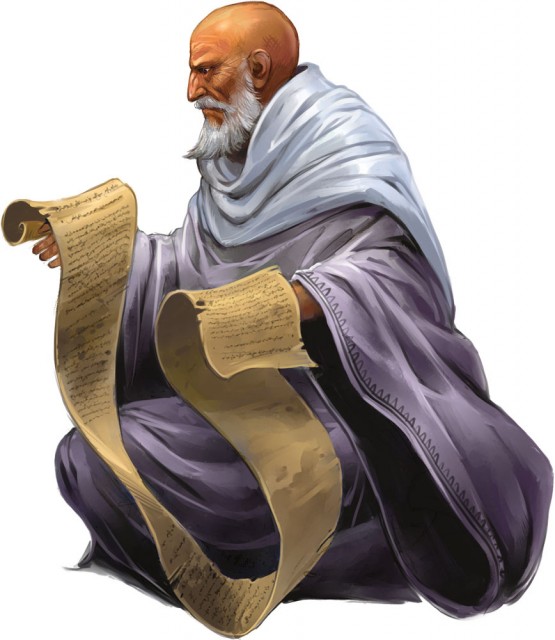

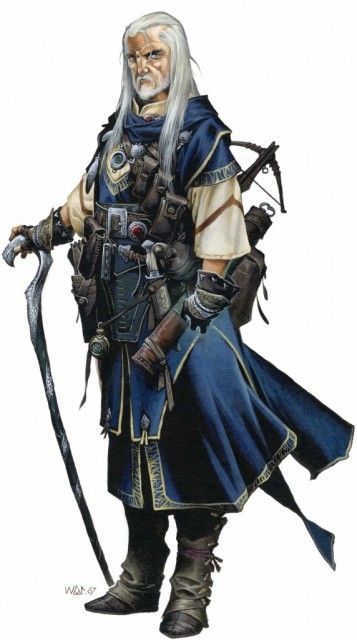
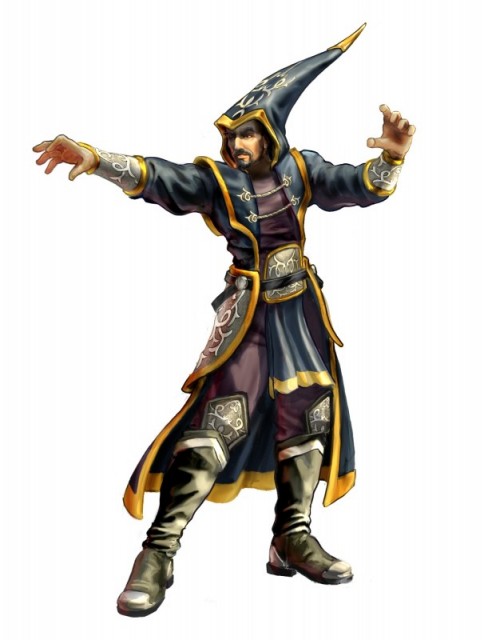
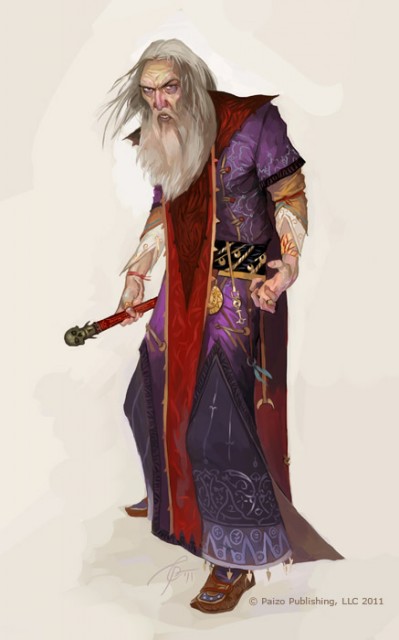
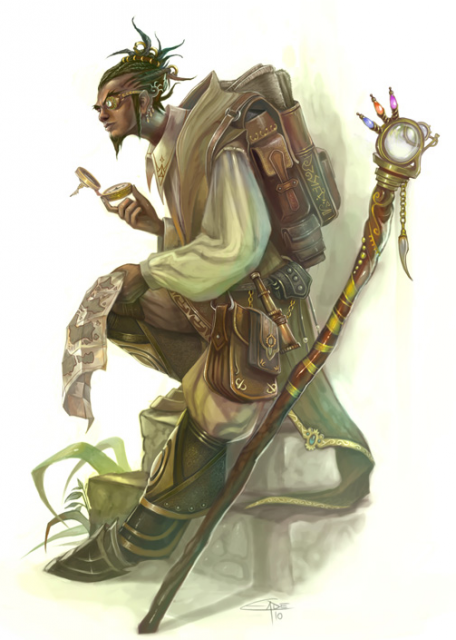


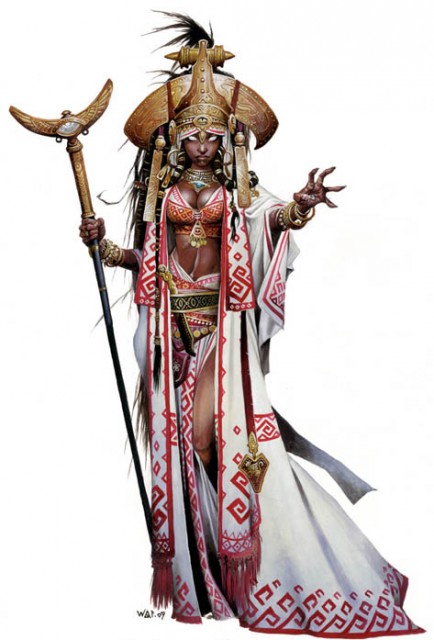
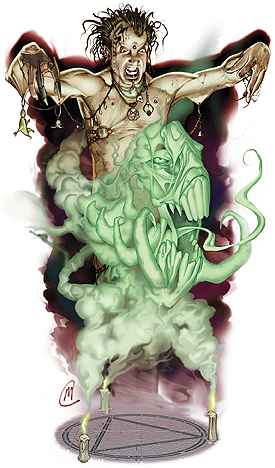

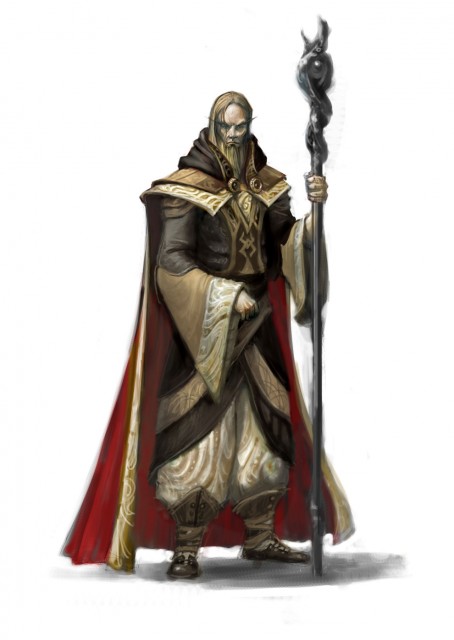
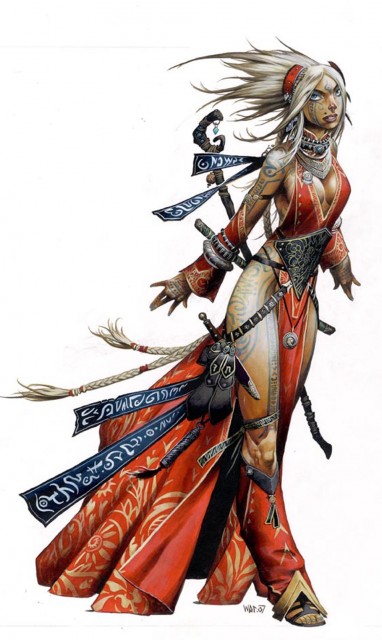
Well, I am afraid that is not a new idea. Basically magic in The Death Gate Cycle series is almost exactly as you are describing it (quantum physics alteration through symbols and will power), and anyone can learn how to use it, although there are only two races that fully understand why and how it works: the Sartan, who cast spells through dances and chants, and the Patrin, who have magic symbols tattooed all across their bodies except for their heads . Both of them use magic runes. The Patrin concentrate in existing objects or phenomena and alter the with their magic. The Sartan on the other hand think first in the result they want and then “force” it into existence. As a personal note, the Patrin are awesome and the Sartan are a bunch of irresponsible crybabies. The books are very good except for the second one. Maybe you’d like to read them or at least check the appendices (where you can find the best description of the workings of magic) to compare this version with what you are preparing
@ agn0sis:
Neat! I figured that most of these posts are not exactly original. Someone, somewhere is to come up with something similar or better. There is no such thing as an original idea in fiction. Thanks for the tip though. I will check these books out.
I will do the same! I really enjoy these posts, great fuel for imagination and we get lots of book recommendations in the comments ;)
Have you read the Ravens series by James Barclay? Magic as a (mana) pattern and energy from extra dimensions, you get everything there, and I really liked how the author built his magical systems. It’s a little bit too over-the-top epic for my usual tastes, but I liked them anyway because of the fantastic world-building, magical systems and characters.
I like this idea of magic being a general rule of nature. The first time I saw something like it was Sympathy and Sygaldry (and to a much lesser extent Naming) from King Killer Chronicles. There’s a strong physics-like notion to Sympathy that requires a force of will to make it work, but there’s also an awesome amount of power available to those who have the strength and discipline to use it.
Curiously enough, you managed to describe the Blind Eternities as seen in magic the gathering with your ‘beyond reality, all magical power arises from this spot’ point.
Anyway, I’m really enjoying your take on magic as something inherent to the world rather than a dues ex force.
An idea for a golemancer, have it so that they physically control their soldiers but have the soldiers be extremely potent. For example, a master of the skill could control a whole golem with their pinky twitching and the golem is capable of using whatever spell it is enchanted with. A newb, on the other hand, has to use full body controls to move even the simplest golem.
Sorry to necro an old post, But I really do appreciate your thinking along the lines of magic as a sort of programming, and these different approaches to it. It’s all very sensible and imaginative, and there aren’t many that touch on the subject so well.